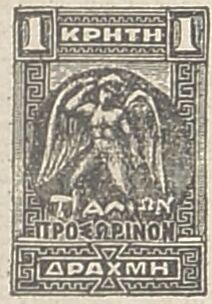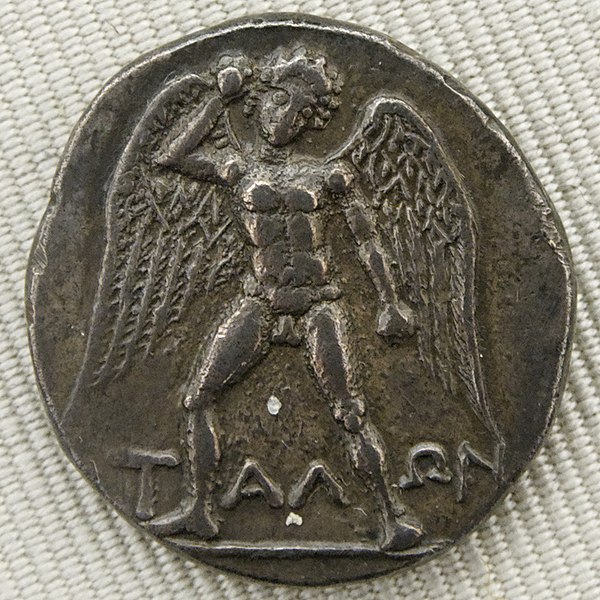In Greek mythology, where gods and monsters shape destinies, Talos stands as a beacon of protection and loyalty. This bronze giant, often overshadowed by more renowned figures, played a pivotal role in safeguarding Crete’s shores, embodying both the marvels of ancient technology and the protective spirit of the island.
Talos Key Facts
| Creator | Hephaestus or Daedalus |
| Defeated by | Medea |
| Habitat | Crete |
| Other names | None |
| Roman name | Talus |
| Associated with | Guarding Crete |
| Symbols | Bronze body, Ichor |
Name and Etymology
The name ‘Talos’ is believed to be of Cretan origin, though its exact etymology remains a subject of debate. Some scholars suggest it might be related to the ancient Greek word “τέλλω” (tellō), meaning “to accomplish” or “to fulfill,” aptly capturing his role as the island’s protector.
Unlike many Greek figures, Talos doesn’t have a direct Roman counterpart, though some texts refer to him as ‘Talus.’ Over time, his name has become synonymous with unwavering guardianship, a bronze sentinel standing against threats to Crete.

Talos Origin and Creation
The island of Crete, a jewel of the Mediterranean, has been the setting for numerous myths and legends. Among these, the tale of Talos stands out as a testament to the island’s rich mythological heritage. This bronze giant, often depicted as a guardian of Crete, has origins that intertwine with the gods and the intricate tapestry of Greek mythology.
Talos is predominantly described as a giant automaton made of bronze, tasked with the duty of protecting Europa from pirates and invaders. He would patrol the island’s shores, circling it three times daily to ensure its safety. The narrative surrounding Talos’ creation and purpose varies, but a few key accounts emerge as the most accepted.
Hephaestus, the God of Fire and Forge
The most widely accepted origin story attributes Talos’ creation to Hephaestus, the god of blacksmiths, craftsmen, and fire. Hephaestus, known for his unparalleled skill in crafting, was said to have forged Talos at the behest of Zeus. This bronze giant was then presented as a gift to protect Europa, whom Zeus deeply cared for. This narrative aligns with Hephaestus’ reputation as the divine blacksmith, responsible for crafting many of the gods’ weapons and other marvelous creations.
Gift from Zeus
Another account suggests that Talos might have been a direct gift from Zeus to Europa. While the exact reasons for this gift vary, the overarching theme is Zeus’ affection for Europa and his desire to ensure her safety on Crete.
Some sources propose alternative origins for Talos. One such theory, albeit less popular, suggests that Talos might have been a survivor from the Age of Bronze, a descendant of the brazen race that sprang from ash-tree nymphs. Another theory posits that he might have been the son of Kres, a personification of Crete.
Contextualizing with Other Cretan Myths
Crete is no stranger to myths of grandeur and wonder. The island is also home to the legend of the Minotaur, a monstrous creature with the body of a man and the head of a bull, confined within the Labyrinth. This Labyrinth was designed by Daedalus, the master craftsman and artist. While Daedalus is not directly linked to Talos’ creation, his prominence in Cretan myths showcases the island’s rich tapestry of legends, where gods, monsters, and mortals often intersect.
Depiction And Characteristics
Talos, in his majestic bronze form, is a sight to behold. His very structure speaks of strength, resilience, and unwavering duty.
Talos’ Form and Abilities
Standing tall, his entire body forged from bronze, Talos was an embodiment of strength. But he wasn’t just a static figure; he had the ability to move, patrol Crete’s shores, and hurl massive boulders at approaching enemy ships. One of his most distinctive features was his single vein, filled with ichor, the blood of the gods, which ran from his neck to his ankle, sealed with a bronze nail.
His bronze composition made him nearly invulnerable to conventional weapons, and his size gave him an advantage in combat. However, his true strength lay in his unwavering commitment to his duty, patrolling the island’s shores, ensuring its safety.
Guardian of Crete
Talos’ primary duty was to safeguard Crete. Every day, he would circle the island’s shores three times, his eyes ever watchful for potential threats. His mere presence was a deterrent, a clear message to any potential invaders about the lengths to which Crete would go to ensure its protection. He wasn’t just a guardian; he was a symbol of Crete’s pride, resilience, and the marvels of its civilization.
Myths about Talos: The Bronze Guardian’s Encounter with the Argonauts
The story of Talos and the Argonauts is set against the backdrop of the epic quest for the Golden Fleece. The Argonauts, a group of heroes led by Jason, embarked on a perilous journey aboard their ship, the Argo. On their journey they faced numerous challenges and adversaries. One such obstacle was the bronze giant, Talos.
The Vulnerability of the Giant
Despite his imposing stature and seemingly invincible bronze exterior, Talos had one vulnerability. In his ankle was a single vein, sealed with a bronze nail or bolt. This vein ran from his neck to his ankle and contained the divine ichor, the ethereal fluid that was the source of his life and vitality.
Medea’s Cunning and Magic
As the Argo drew near, Talos began his assault, launching boulders to prevent their approach. Recognizing the imminent threat, Medea, the sorceress and a key member of the Argonauts, devised a plan. Medea was not just a mere mortal; she was a priestess of Hecate, the goddess of magic, and possessed knowledge of spells, potions, and enchantments.
Using her enchanting abilities, Medea either cast a spell that caused Talos to graze his ankle on a sharp rock or, in some versions, she lulled him into a deep trance. Once in this state, either the bolt in his ankle was removed or the vein was pierced. The ichor, the source of his life force, flowed out, draining him of his strength and vitality. As the divine fluid left his body, the once mighty guardian of Crete fell to the ground, lifeless.
The Significance of the Tale
The defeat of Talos is not just a tale of adventure but also carries deeper symbolic meanings. It underscores the theme of human ingenuity and cunning overcoming sheer strength and size. Medea, with her knowledge and magic, managed to find a solution to a problem that brute force could not overcome. The story also touches on the concept of mortality and vulnerability. No matter how invincible a being might seem, every creature has its Achilles, The Mightiest Champion of The Trojan War‘ heel.
Representations Of Talos In Art
Talos, with his imposing bronze form, has been a subject of fascination for artists throughout the ages. Ancient pottery, frescoes, and sculptures occasionally depict him, often showcasing his confrontation with the Argonauts. His figure, towering and formidable, serves as a reminder of Crete’s might and the marvels of ancient craftsmanship.

Mentions in Ancient Texts
Talos, Crete’s bronze guardian, may not be as famous as other Greek mythological figures. However, several ancient Greek texts highlight his role and importance in their myths.
Apollonius of Rhodes’ “Argonautica”
Apollonius of Rhodes, a Hellenistic poet, is best known for his epic “Argonautica,” written in the 3rd century BC. This work chronicles the voyage of Jason and the Argonauts in their quest for the Golden Fleece. Talos’ confrontation with the Argonauts is a pivotal moment in their journey, showcasing the challenges heroes faced in their quests.
In “Argonautica,” Apollonius writes:
“As the Argo approached the shores of Crete, the bronze giant Talos emerged, a sentinel of the island. With boulders in hand, he sought to repel the intruders. But with cunning and might, even the mightiest can fall.”
This passage not only highlights Talos’ unwavering duty to protect Crete. It also underscores the perils and challenges the Argonauts faced on their journey.
Pseudo-Apollodorus’ “Bibliotheca”
Pseudo-Apollodorus, whose true identity remains a mystery, penned “Bibliotheca” in the 1st or 2nd century AD. Often referred to as “The Library,” this work serves as a treasure trove of Greek myths and legends. Within its pages, Talos’ role as the guardian of Crete and his eventual downfall at the hands of Medea is recounted, reinforcing his significance in the broader context of Greek mythology.
Diodorus Siculus’ “Bibliotheca historica”
Diodorus Siculus, a historian of the 1st century BC, wrote “Bibliotheca historica,” a comprehensive history spanning mythological times to his contemporary era. In this work, Talos is mentioned as a gift from Zeus to Europa, further emphasizing his role as a protector. Diodorus offers a slightly different perspective on Talos, presenting him not just as a guardian but also as a symbol of divine favor and protection.
Frequently Asked Questions
Depending on the source, Talos was either crafted by Hephaestus, the god of blacksmiths, or the craftsman Daedalus.
The sorceress Medea either removed the bronze nail from his ankle or used her sorcery to bring about his downfall.
Talos was entrusted with the task of guarding Crete’s shores, ensuring the island’s safety from invaders.
Featured Image Credit: Carstens, Asmus Jacques, Public domain, via Wikimedia Commons
